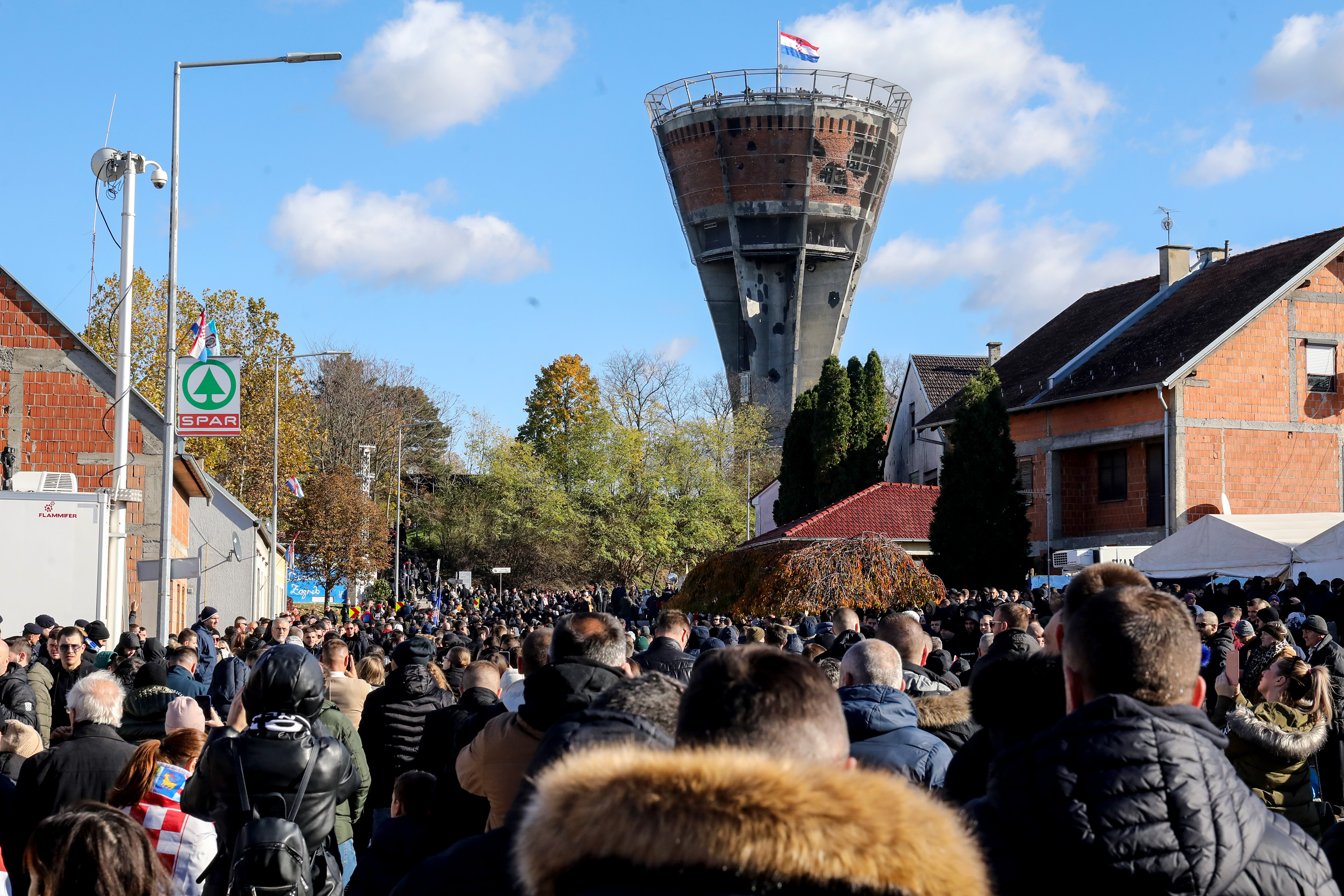
Every November, the people of Vukovar reflect on the horrors of 1991, especially the tragic events of mid-November that year, when the city's defense collapsed after a brutal siege imposed by the Yugoslav People's Army (JNA) and Serb paramilitary forces.
On 18 November 1991, the occupying forces JNA and Serbian paramilitaries entered the devastated city, committing widespread atrocities against defenders and civilians.
The siege lasted 87 days, with the Battle of Vukovar ending on 18 November. The city remained under occupation until 15 January 1998, when peaceful reintegration restored Croatia's constitutional and legal order in the Croatian Danube region.
Although clashes began earlier, the Battle of Vukovar is often considered to have started on 25 August 1991, with a full-scale tank-infantry assault by the JNA and Serbian paramilitaries.
The JNA expected to raid Vukovar within a week, but resistance lasted nearly three months. Despite relentless air and artillery bombardments, the defenders held their ground as long as their limited supplies of weapons and ammunition allowed.
As the siege tightened, defenders relied on a precarious supply route—the so-called "Corn Path" from Vinkovci and Bogdanovci. The fall of Lužac on 2 November and Bogdanovci on 10 November signalled that Vukovar’s defence was nearing its end.
Croatian forces, numbering no more than 3,000, faced a vastly superior enemy of over 30,000 troops supported by 600 tanks, 500 armoured personnel carriers, and 180 howitzers.
The JNA committed the Novosadski Corps, river navy, elements of the air force, and elite mechanized and motorized divisions. Serbian Territorial Defence units, rebel Serbs, and Chetnik paramilitaries reinforced them.
Despite this, about 1,800 members of the Croatian National Guard, police, and HOS volunteers, organized into the 204th Brigade, defended Vukovar. Attempts to break the siege failed.
In the late spring and early autumn 1991, civilians spent most of their days in basements and shelters, enduring severe shortages of electricity, food, and water.
On 19 October, a humanitarian convoy from Doctors Without Borders entered the city and evacuated 112 wounded patients from Vukovar Hospital. Tragically, two nurses died in a minefield during the rescue operation.
Vukovar fell on 18 November, although isolated resistance continued until 22 November. Around 22,000 non-Serbs were expelled, finding temporary refuge across Croatia.
By 19 November 1991, 450 defenders and 1,350 civilians, including 86 children, had been killed. More than 2,500 people were wounded, and 858 children lost one or both parents. Thousands were taken to Serbian concentration camps, and the fate of 2,630 people remained unknown after the occupation.
The Franciscan Monastery in Vukovar has records of 2,717 deaths during the siege. The Vukovar-Srijem County alone accounted for 497 unresolved cases, 371 of which were from the city of Vukovar.
In 1998, the largest mass grave in Europe since World War II was exhumed in Vukovar, containing 938 bodies of defenders and civilians.
The Ovcara mass grave remains the most harrowing symbol of the city’s suffering. In 1996, the remains of 200 victims—defenders and civilians taken from the hospital on 19 November and executed on 20 November—were exhumed there. The youngest victim was 16, and the oldest was 72.
In honour of 18 November 1991, the Croatian Parliament declared the day as "Remembrance Day for the Victims of Vukovar" in 1999. In 2020, it was recognized as a national holiday, observed as the Day of Remembrance for the Homeland War Victims and the Sacrifice of Vukovar and Skabrnja.
The memory of Vukovar, a symbol of Croatian freedom, serves as a solemn reminder of the sacrifices made for independence.
Kakvo je tvoje mišljenje o ovome?
Pridruži se raspravi ili pročitaj komentare



 Srbija
Srbija
 Bosna i Hercegovina
Bosna i Hercegovina
 Slovenija
Slovenija







